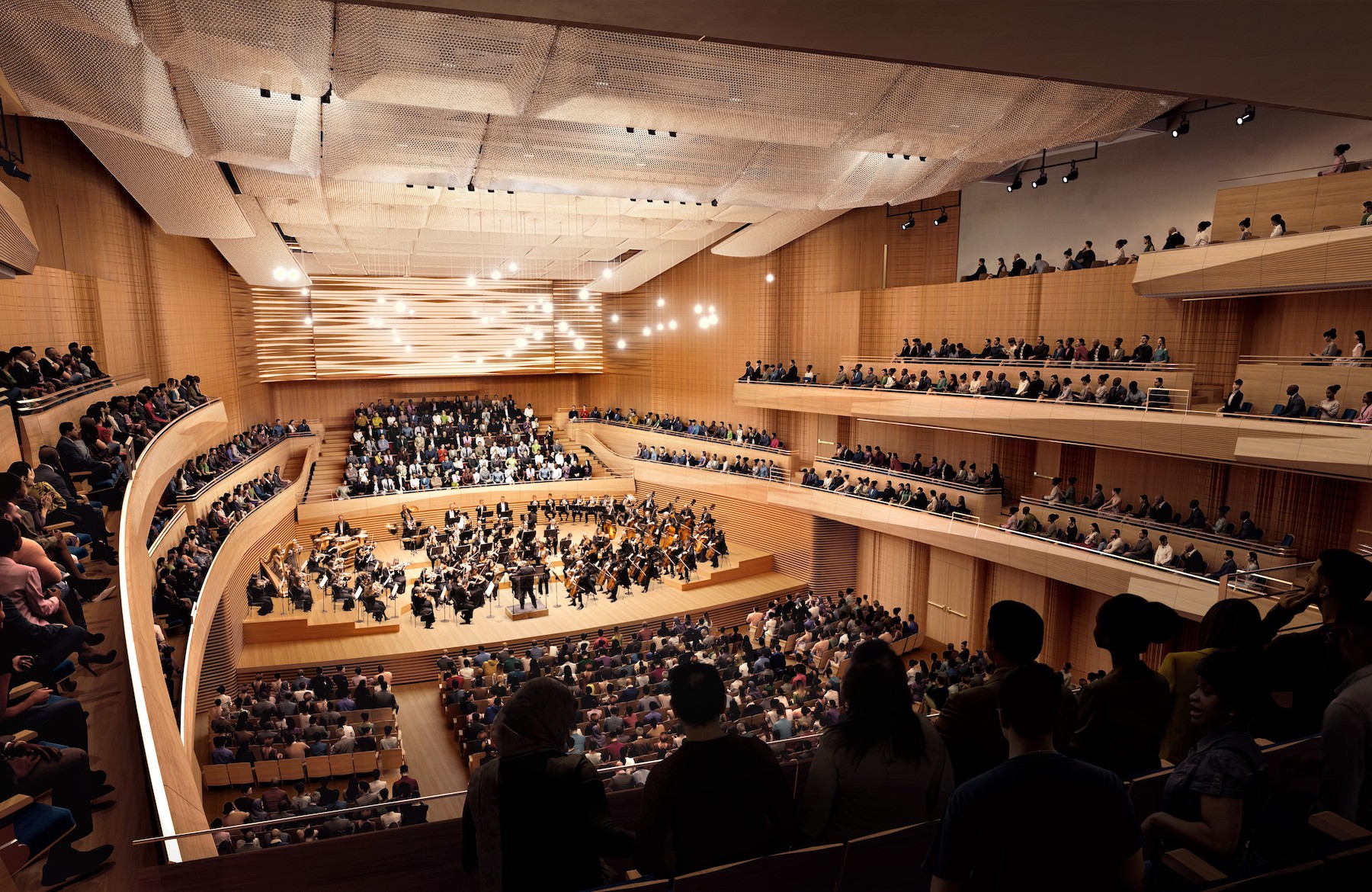David Geffen Hall, the acoustically challenged home to the New York Philharmonic at Lincoln Center for the Performing Arts in New York City, will reopen in October, 18 months ahead of schedule, as a “reimagined” performance space following its $550 million reconstruction and renovation.
On Wednesday, Lincoln Center made official the hall’s reopening plans at a press conference whose attendees included New York Governor Kathy Hochul and New York City Mayor Eric Adams, the latter of whom compared this project—which was completed during a coronavirus pandemic that shut down many businesses and activities in the city, including Lincoln Center—to the construction of the Empire State Building in one year and 24 days during the Great Depression of the 1930s.
Adams also made the connection between tourism that he hopes this refurbished hall will attract and his administration’s commitment to public safety at a time when violent crimes in New York City have risen alarmingly.
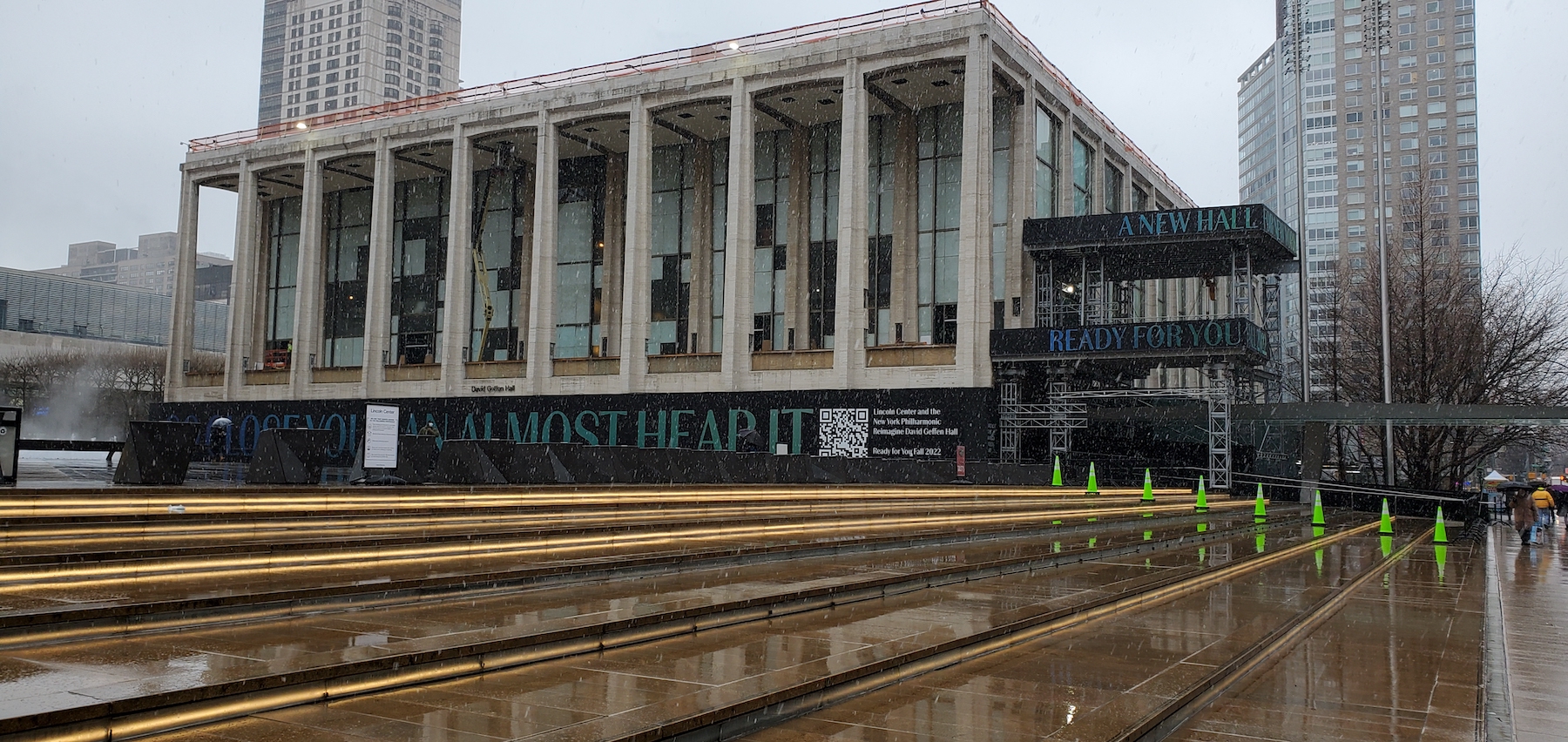
In the press conference’s audience was a cohort of construction workers for this project that included Milton Angeles, a civil engineer for Turner Construction, the project’s construction manager. During his brief speech, Angeles recalled being out of work before he was hired for his current position. This reconstruction created 3,000 construction job and 6,000 in total, and was expected to generate more than $600 million in economic activity through the reopening.
Other design and building team members include Thornton Tomasetti and Kohler Ronan (engineering), Diamond Schmitt Architects (architectural design), Akustiks (acoustics), Fisher Dachs (theater design), and Tod Williams Billie Tsien Architects (public space design, including a lobby that will double the size of its predecessor space).
The vast majority of this project’s cost—which was fully funded as of yesterday—was raised from private donor sources.
A SOUND INVESTMENT
At least since April 2021, Lincoln Center has been saying that David Geffen Hall would reopen in the fall of 2022, well ahead of its initial 2024 opening target. The pandemic, in fact, allowed for an accelerated reconstruction schedule after the Philharmonic stopped performing at Geffen and temporarily shuttled between Alice Tully Hall and Rose Theater at Jazz, two other performance spaces on Lincoln Center’s campus.
The New York Times reported yesterday that the pandemic cost the Philharmonic more than $27 million in ticket revenue.
Since opening in 1962, first under the name Philharmonic Hall and then as Avery Fisher Hall, the building had been plagued by complaints about the inferior quality of its acoustics and its design aesthetics (the hall was, essentially, a mammoth square box). In 2015, the record and movie producer David Geffen contributed $100 million for renovations and naming rights, and that ante kickstarted the fundraising campaign to reconstruct the hall.
“This is not just a renovation,” asserted Gary McCluskie, a principal architect with Diamond Schmitt, who spoke with BD+C yesterday.
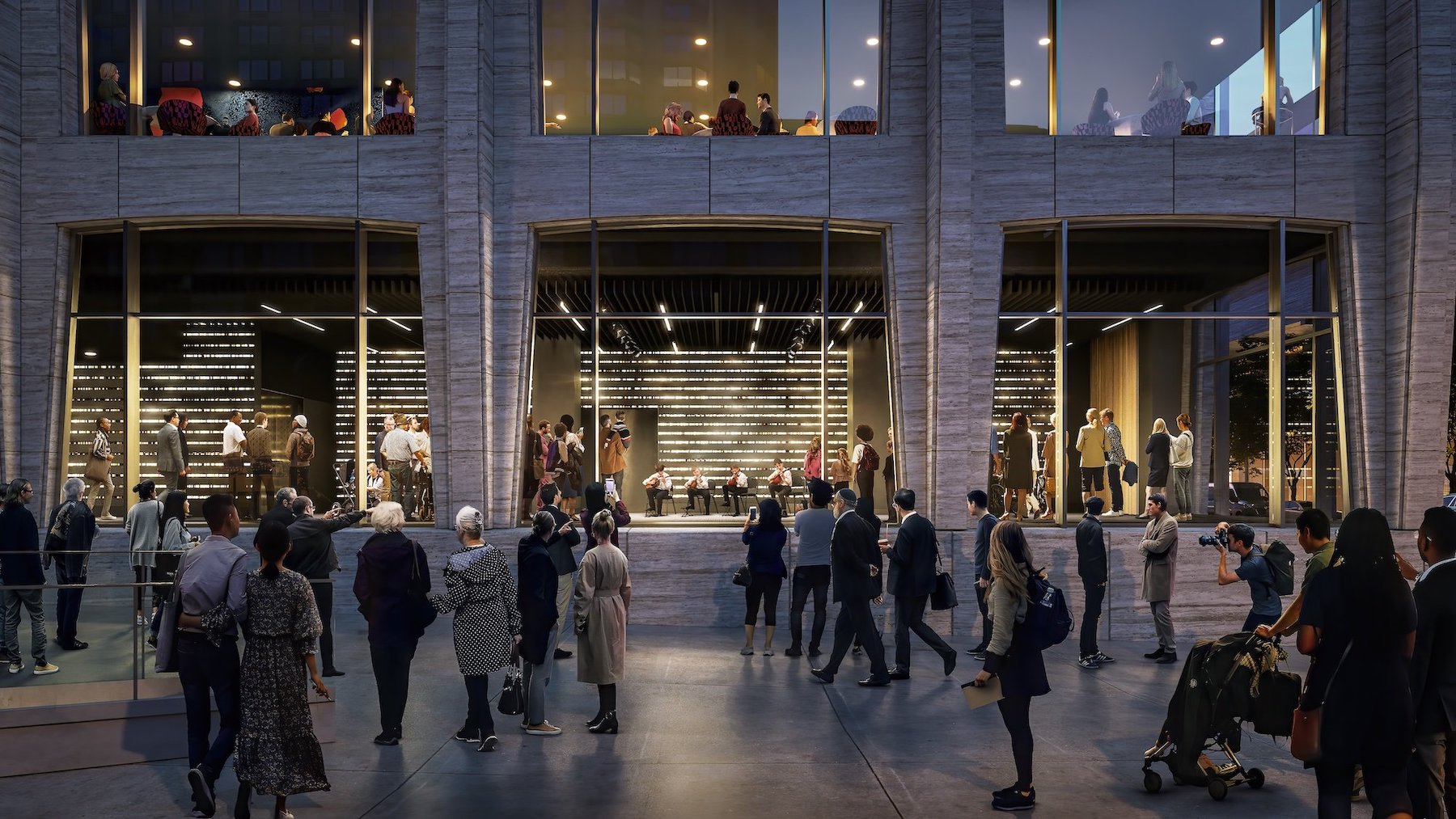
FEWER SEATS, MORE TRANSPARENCY
Key changes to improve the hall’s acoustics and sight lines, he explained, include eliminating its proscenium, moving the stage 24 ft forward, and positioning the stage so that the audience seating wraps around it. The design team reduced the seating to 2,200, from 2,738, reconstructed the side tiers, and replaced what had been plaster walls with 2- to 4-inch-thick beech wood cladding that is attached to concrete.
“Acoustics is all about balance,” said Paul Scarbrough, a Principal with Akustiks. “The audience absorbs sound, so with fewer people there’s less absorption.” He and McCluskie also pointed out that the hall—including motorized plastic reflectors in the ceiling, its lighting, the stage itself, and its sound—can be reconfigured for different types of performance events. (Scarbrough noted that amplified versus orchestral music requires different acoustical considerations.)
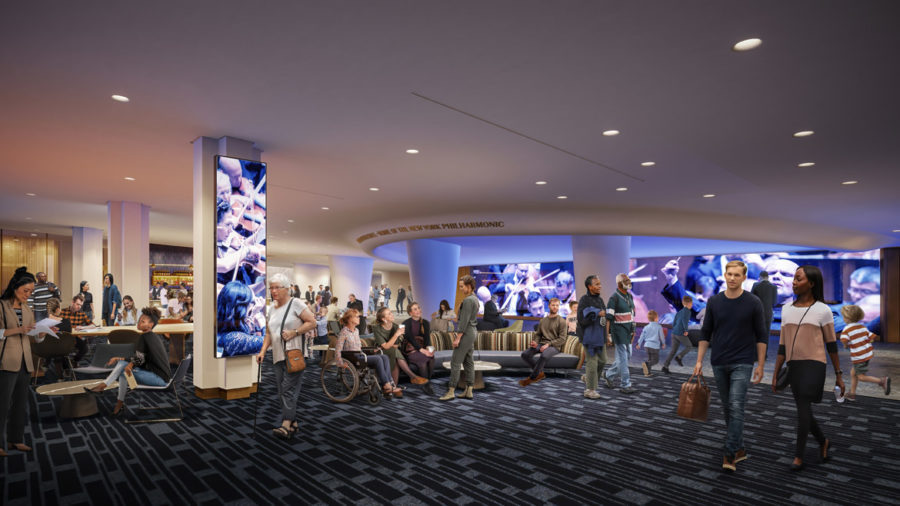
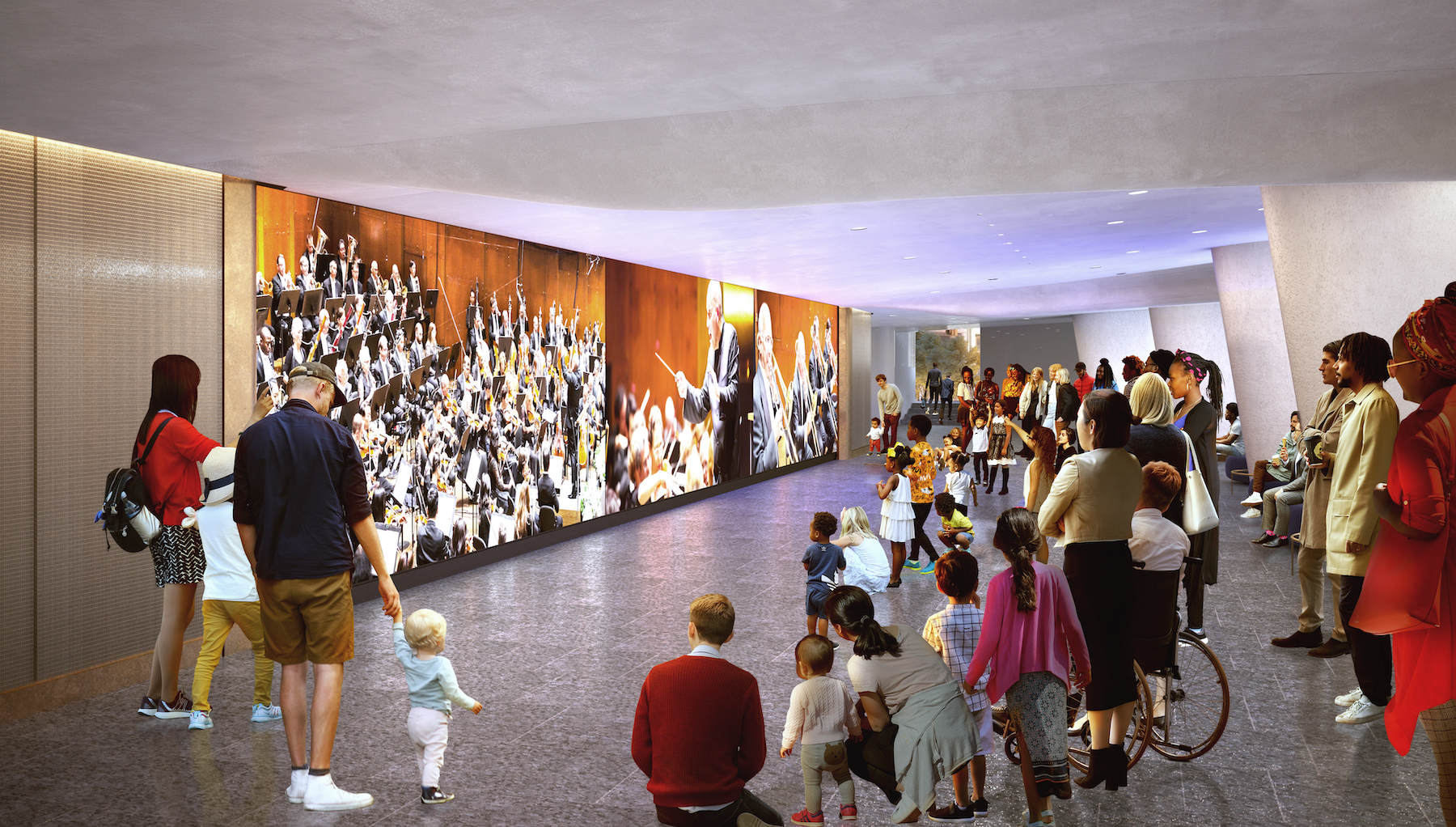
“We redefined every material we used to capture the energy of the performances,” said McCluskie. He added that those materials and fabrics are being carried over into the hall’s public spaces that include a Welcome Center, a Grand Promenade that Lincoln Center claims will create one of the largest gathering spaces for a performance facility in the city, and the addition of The Sidewalk Studio, a ground-floor home for educational, artistic and community activities with floor-to-ceiling windows for spectators to watch.
The hall’s expanded lobby will feature a 50-ft-long media streaming wall that displays concerts and events in real time.
The building will offer 11,000 sf of office space, and its north façade will serve as a billboard for site-specific works. It will also include a restaurant, patrons lounge and other amenities.
This summer, the Philharmonic plans to release its upcoming schedule of performances at David Geffen Hall.
Related Stories
| Aug 11, 2010
AASHE releases annual review of sustainability in higher education
The Association for the Advancement of Sustainability in Higher Education (AASHE) has announced the release of AASHE Digest 2008, which documents the continued rapid growth of campus sustainability in the U.S. and Canada. The 356-page report, available as a free download on the AASHE website, includes over 1,350 stories that appeared in the weekly AASHE Bulletin last year.
| Aug 11, 2010
Girl Scouts of San Jacinto Council Program Place Project
Houston, Texas
The Girl Scouts of San Jacinto Council Program Place is the headquarters for the largest Girl Scout Council in the U.S., with 63,000 scouts. The building houses the council’s administrative offices, a Girl Scout museum, and activity space. When an adjacent two-story office building became available, the council jumped at the chance to expand its museum and program space.
| Aug 11, 2010
Burt Hill, HOK top BD+C's ranking of the nation's 100 largest university design firms
A ranking of the Top 100 University Design Firms based on Building Design+Construction's 2009 Giants 300 survey. For more Giants 300 rankings, visit http://www.BDCnetwork.com/Giants
| Aug 11, 2010
PBK, DLR Group among nation's largest K-12 school design firms, according to BD+C's Giants 300 report
A ranking of the Top 75 K-12 School Design Firms based on Building Design+Construction's 2009 Giants 300 survey. For more Giants 300 rankings, visit http://www.BDCnetwork.com/Giants
| Aug 11, 2010
Turner Building Cost Index dips nearly 4% in second quarter 2009
Turner Construction Company announced that the second quarter 2009 Turner Building Cost Index, which measures nonresidential building construction costs in the U.S., has decreased 3.35% from the first quarter 2009 and is 8.92% lower than its peak in the second quarter of 2008. The Turner Building Cost Index number for second quarter 2009 is 837.
| Aug 11, 2010
AGC unveils comprehensive plan to revive the construction industry
The Associated General Contractors of America unveiled a new plan today designed to revive the nation’s construction industry. The plan, “Build Now for the Future: A Blueprint for Economic Growth,” is designed to reverse predictions that construction activity will continue to shrink through 2010, crippling broader economic growth.
| Aug 11, 2010
Section Eight Design wins 2009 Open Architecture Challenge for classroom design
Victor, Idaho-based Section Eight Design beat out seven other finalists to win the 2009 Open Architecture Challenge: Classroom, spearheaded by the Open Architecture Network. Section Eight partnered with Teton Valley Community School (TVCS) in Victor to design the classroom of the future. Currently based out of a remodeled house, students at Teton Valley Community School are now one step closer to getting a real classroom.


